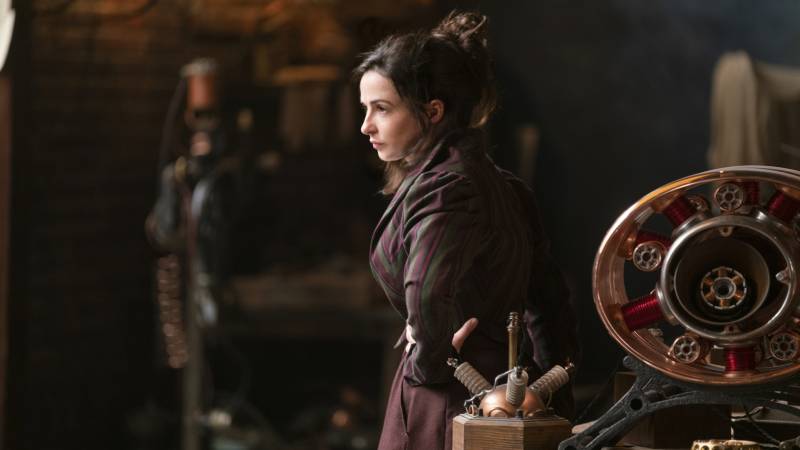Unfocused and overstuffed, the first four episodes of HBO’s The Nevers provided to critics lack a sufficiently strong narrative backbone to support the surfeit of characters, subplots, themes and familiar storytelling tics thrown at the viewer. The series pairs all this tumult with a frustratingly incremental approach to disclosing What Is Really Going On; as a result, allegiances shift, plots twist and characters take actions for reasons we can only guess at—provided we’re willing to bother.
Those sudden reveals and reversals are meant to surprise and delight, of course. And maybe they would, if the show spent more energy attempting to get us invested in these characters and what happens to them.
By the end of the fourth episode, viewers who’ve paying close attention will have developed a working theory about Amalia True (Laura Donnelly), the leader of a rag-tag group of women in Victorian London who’ve been granted weird powers by a mysterious event. Amalia’s got the power to experience sudden ripples of the future, see. She’s also fond of the occasional donnybrook, and is an uncannily exceptional hand-to-hand fighter in a way that doesn’t seem connected to her particular power (her “turn,” in the show’s parlance). She’s also got a complicated past she doesn’t like to talk about, including a connection to another one of the “Touched” (others who acquired powers in the same event)—a murderous madwoman named Maladie (Amy Manson). Amalia’s taciturn about pretty much everything, in fact, except for her stated mission, which is to gather together the “Touched” (mostly women of lower station) at the orphanage she runs, so as to offer them protection from a populace growing increasingly hostile to them.
There’s more to it, and to her, and the conclusion of the fourth episode suggests that we’ll get to know Amalia’s whole deal in the two episodes that follow (HBO is dividing up The Nevers‘ season into two six-episode chunks—the second of which has yet to be filmed, and does not yet have an air date). Potential viewers will have to make their own personal calculations to gauge their willingness to invest their time into a show so devoted to cultivating and perpetuating inessential mystery in lieu of clear storytelling.

9(MDAxOTAwOTE4MDEyMTkxMDAzNjczZDljZA004))

